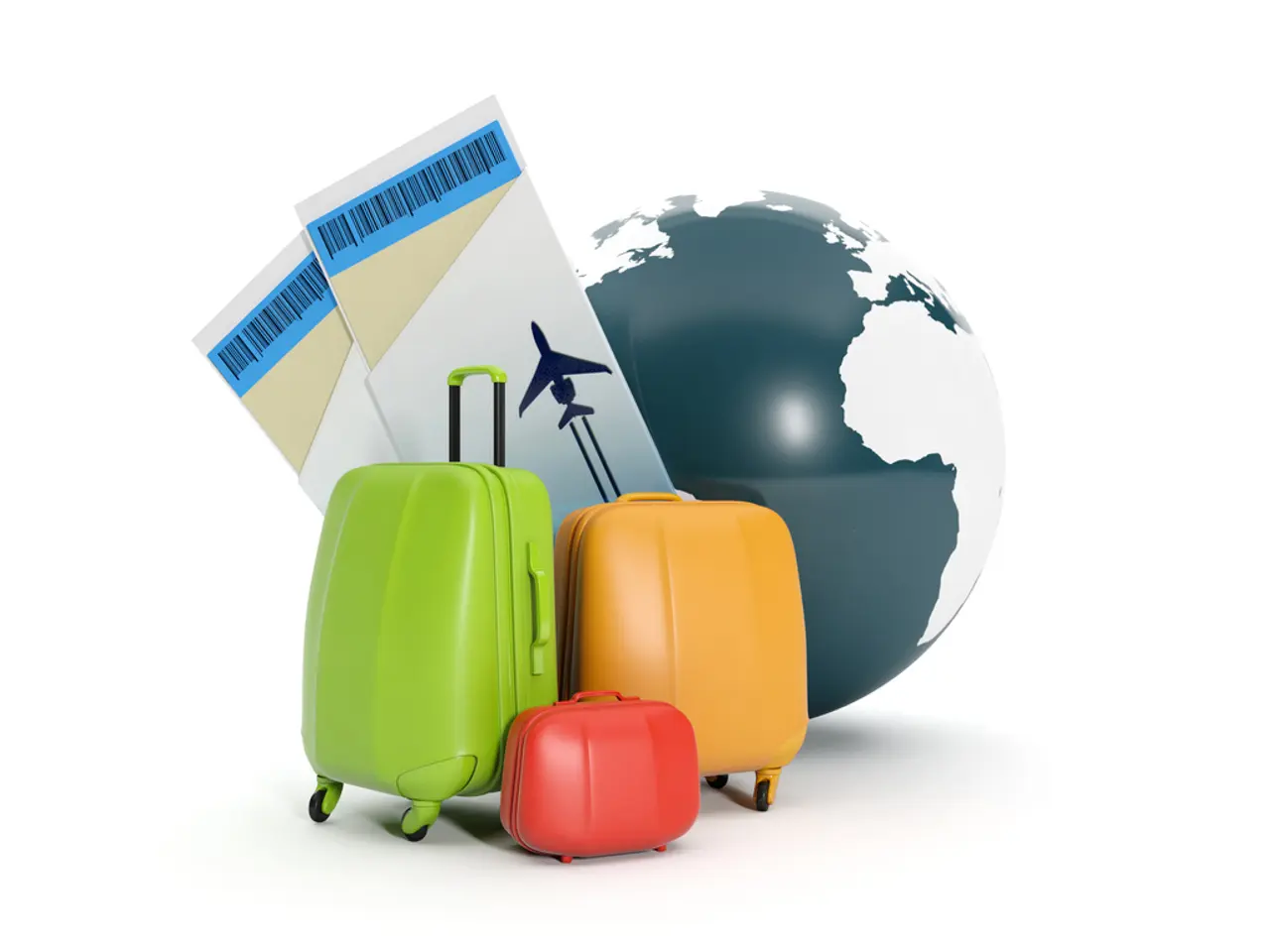"On-the-Move Meetups: Embracing the Future of Work During Travel"
In the ever-evolving landscape of corporate travel, a new trend is emerging that promises to revolutionise the way businesses conduct meetings and conferences - 'Meetings in Motion'. This concept, which involves meetings, negotiations, networking, and deal-making during transit, is gaining traction aboard planes, trains, and automobiles.
The integration of cutting-edge technologies such as generative AI and immersive reality is set to make 'Meetings in Motion' more interactive and productive. These advancements are driving the shift towards enabling productivity, creativity, and seamless connectivity while on the move.
One of the key drivers of this trend is the advent of high-speed connectivity, with 5G networks and improved onboard Wi-Fi becoming increasingly common in planes and trains. This uninterrupted internet access empowers uninterrupted video conferencing, cloud-based collaboration, and real-time information sharing, making travel a productive environment for corporate meetings and collaboration.
Cloud-based virtual meeting platforms, such as Zoom, Microsoft Teams, and others, optimised for low latency and high interaction, support productive engagements during travel. These platforms often come with AI-driven features like automatic transcription, noise cancellation, and smart scheduling to enhance communication quality on the move.
For meetings in automobiles and trains, there is a push towards ergonomic seating equipped with foldable desks, power outlets, and mounts for laptops and tablets to create mini-workspaces. Portable devices and accessories facilitate comfort and productivity during transit.
The trend is also driven by the growing popularity of hybrid models, combining in-person with online participation, enabling meetings to happen anytime, anywhere—even during travel. This shift is supported by tools that facilitate collaboration and engagement regardless of location.
Sustainability is another key focus, with companies seeking travel options and meeting formats that reduce carbon footprints. This has led to a rise in virtual attendance and efficient multimodal travel combining planes, trains, and automobiles.
Examples of this trend can be seen in various modes of transport. Amtrak's Acela service in the U.S. has upgraded business class cabins with foldout workstations, power outlets, high-speed Wi-Fi, and introduced private compartments. In Europe, rail operators like Eurostar offer private compartments and dedicated business lounges equipped with soundproof pods and video conferencing capabilities.
Even in the skies, airlines like Qatar Airways and Virgin Atlantic are offering innovative seating arrangements, such as Qatar Airways' QSuite, which can seat four people facing each other, and Virgin Atlantic's Loft social space on selected planes.
The trend of 'Meetings in Motion' is set to continue, with predictions suggesting it will be one of the key Business Travel Trends for 2025. The backbone of this trend is technological, driven by the same suite of technologies that enabled the takeoff of hybrid work during the pandemic.
Innovations like NASA's Advanced Air Mobility project, developing technologies for electric air taxis, could become new platforms for in-transit collaboration by 2035. Advanced videoconferencing tools like Zoom, Teams, and Slack have already made long-distance calls almost as immersive as real-time meetings.
In conclusion, the current 'Meetings in Motion' trend for corporate travel is propelled by enhanced mobile connectivity, sophisticated cloud collaboration tools, ergonomic travel workspaces, AI-powered meeting assistance, and a strong emphasis on hybrid models and sustainability. These technologies are transforming planes, trains, and automobiles into productive environments for corporate meetings and collaboration.
- The integration of technologies like generative AI and immersive reality in 'Meetings in Motion' is expected to increase interactivity and productivity.
- The rise of high-speed connectivity, such as 5G networks and improved onboard Wi-Fi, is empowering uninterrupted video conferencing and real-time information sharing during travel.
- Cloud-based virtual meeting platforms, optimized for low latency and high interaction, are supporting productive engagements during corporate travel.
- The growing popularity of hybrid models is enabling meetings to happen anytime, anywhere, even during travel, with tools facilitating collaboration and engagement regardless of location.




